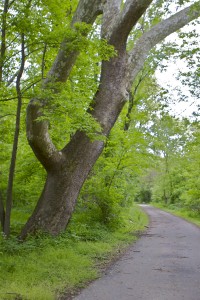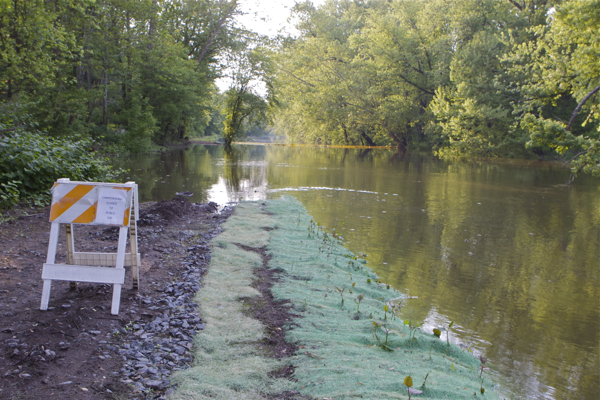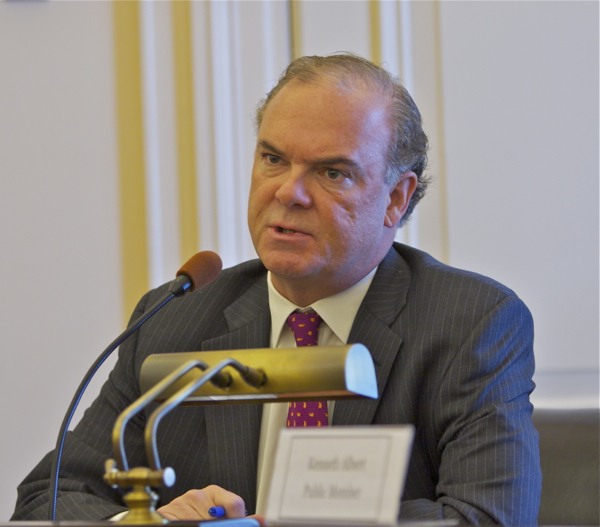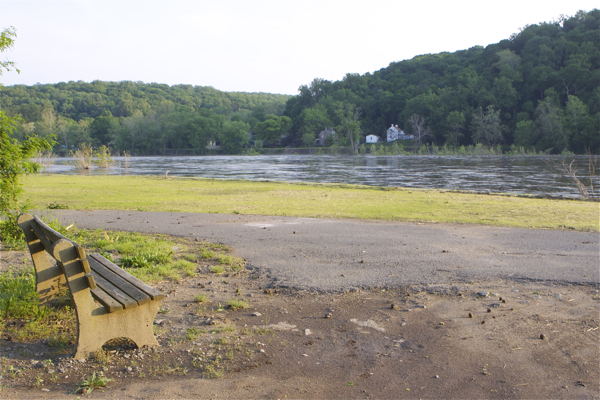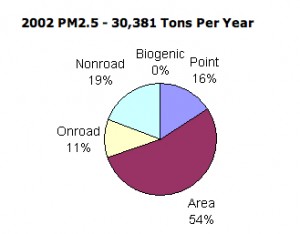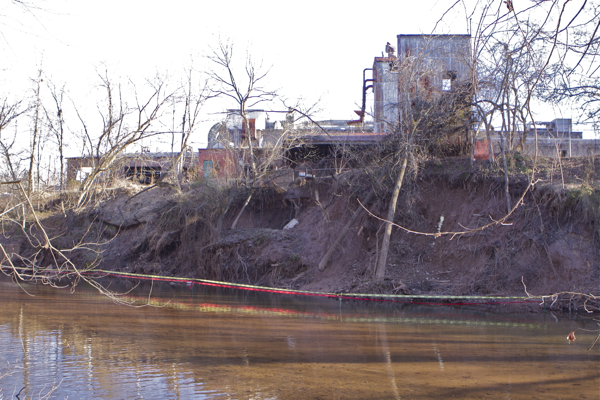Latest on Bull’s Island – D&R Canal Commission Will Ask DEP to Make a Public Presentation
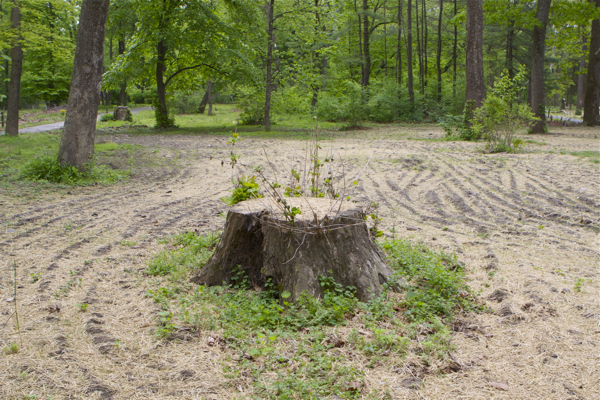
Bull's lsland - DEP already cut down this sycamore. Seeded and hayed grass is part of riverfront restoration (5/7/12)
Quick update – important new developments!
The D&R Canal Commission met this morning.
Bull’s Island was not on the agenda. The DEP representative on the Commission said nothing about Bull’s Island, even when asked to do so during the public comment session.
The DEP Bull’s Island Park Superintendent was not in attendance.
Executive Director Marlen Dooley summarized the Superintendent’s monthly Report. It managed to say nothing about Bull’s Island (consistent with DEP gag order). But the Superintendent’s Report did note that there were lots of public questions on the new boat launch fees, which were described as the public’s “biggest concern”. So it looks like now even the Parks Superintendent has entered the spin zone.
The NJ Water Supply Authority monthly report also ignored Bull’s Island (surprise surprise! – Of course, they don’t want to talk about USACE stop work and restoration orders or Hunterdon County SCD enforcement that resulted from their flagrant violations!).
To her credit, ED Dooley broke the silence and said that she was discussing review plans with DEP and was given assurance that the Commission would review any DEP plans prior to implementation. Dooley also succinctly noted:
Bull’s Island [public] questions continue about our review levels
I again put the issue on the table during the public comment session (for prior discussion, see the DRCC April 18, 2012 meeting minutes).
I advised the Commission of significant public concerns regarding DEP’s plans to clearcut trees and remove all vegetation from the northern tip.
I noted the lack of any State Park planning process, and contrasted that with the open public process used for the Lumberville-Raven Rock pedestrian bridge maintenance project, where the public and the DRCC were provided ample opportunity to weigh in on and influence all aspects of the project, including scheduling and important project design details.
I asked that the Commission fill that planning vacuum. I suggested that the Commission develop fact sheets about their review process for any clearcut plan and ask DEP to provide public information and provide an opportunity for the public to weigh in in an early and meaningful way onthis controversial yet still undefined project.
I criticized DEP’s continuing refusal to provide public information on their plans for the Park. I noted DEP’s current practice of providing partial and misleading information in press releases and the Park Superintendent advice to the public, e.g. DEP is advising the public that they plan to restore the northern section with native vegetation and make it a “natural area”, but is not divulging clearcut or tree removal plans.
I advised the Commission that I has spoken to over 100 people, all of whom but one strong object to a clearcut or tree removal.
I advised them that I had reached out to and gotten calls from federal agencies including USFWS and NPS, and was meeting with local governments, environmental Commissions, and environmental groups.
I asked if the DRCC review included consideration of engineering issues, such as erosion and maintaining the current mouth to the canal, or ecological concerns, such as habitat, or consultation and coordination with involved federal review agencies, including USFWS, NPS, USACE, and USEPA. I noted fatal flaws in the basis for the DEP’s plan.
I mentioned regulatory reviews and the Delaware Lower River Wild and Scenic River Management Plan and I highlighted the importance of a transparent process, instead of being forced to file OPRA requests and blog to get information out to the public.
Several Commission members – and members of the public – also stated that they had been contacted and had heard concerns and gotten questions about Bull’s Island.
Commissioner Alison Mitchell suggested some form of open process, akin to a routinely held pre-conference meeting with project applicants, so the public could gather information and shape plans for the Island. She warned the Commission to avoid the pressure of expedited reviews of what is becoming a controversial project.
Commissioner John Loos noted the contrast between DEP Greeen ACres regulations, which require that local governments conduct robust and open planning for open space preservation, yet DEP excludes the public when making major decisions about State parks and state lands.
Loos recommended that the Commission hold a information gathering session and invite all interested parties to attend and share information and concerns.
Commissioner David Knights questioned why the Commission should take the lead, when this was a DEP project, there were many other state, federal and local agencies involved, and there was no application yet filed for review. Knights suggested DEP hold informal meetings or public hearings. Knights then noted that he did not share and strongly differed with Mr. Wolfe’s criticism of DEP.
Commissioner Phyllis Marchand noted that she was getting questions from the public regarding Bull’s island and suggested that perhaps instead of the type of event recommended by Mr. Loos (which she felt would become adversarial) that the Commission ask DEP to present and informal plan and allow the public to comment on it at a special meeting.
Marchand’s approach seemed to garner consensus and the DRCC Counsel then jumped in to say he would work with Executive Director Dooley on a letter to DEP requesting a presentation, along the lines of a pre-application conference.
Later, Chairman Jessen asked me whether DEP had calculated logging revenues. I told him of DEP bid documents and emails suggesting that the project would at best break even, and could lose money.
Commissioner Loos asked me about the bird habitat on the Island, which I explained – and added that there were state rare, threatened and endangered (and species of special concern) plant and animal species present on the Island.
That pretty much ended the meeting.
Afterwards, I spoke with DRCC legal Counsel to ask when we might expect the letter to DEP Commissioner Martin requesting a presentation. He refused to provide a timeline.
I told him that regulatory constraints will stop and tree cutting to no later than the fall, so asked for that letter sooner rather than later.
We will continue to keep you posted.
In the meantime, I’ve posted up plenty of DEP documents for you to use in generating opposition to clearcut or tree removal plans on Bull’s Island – see this and this and this – and don’t forget to hit the links!).
